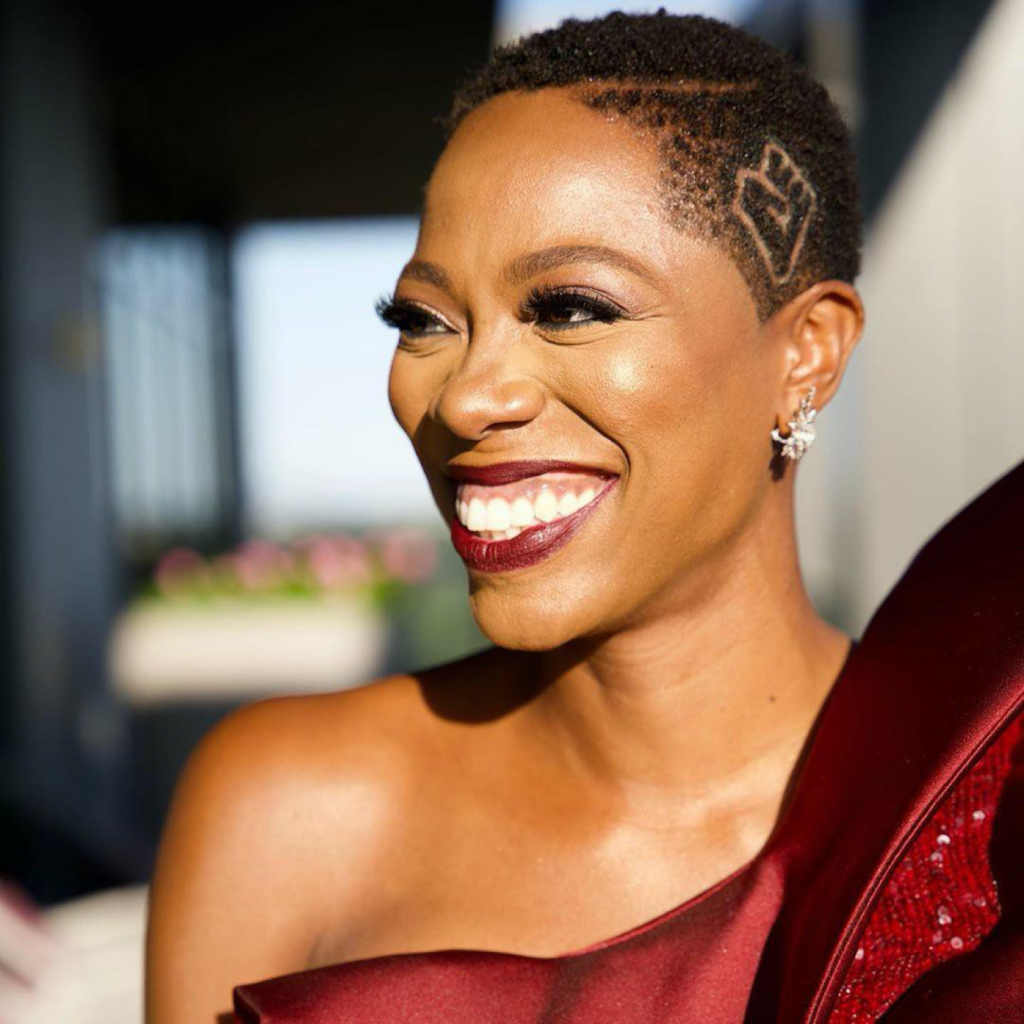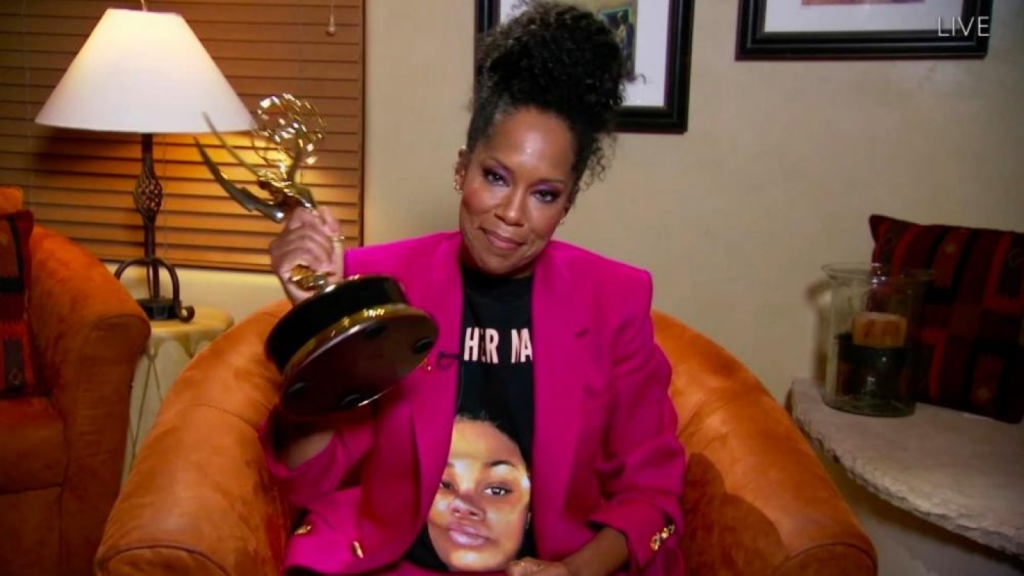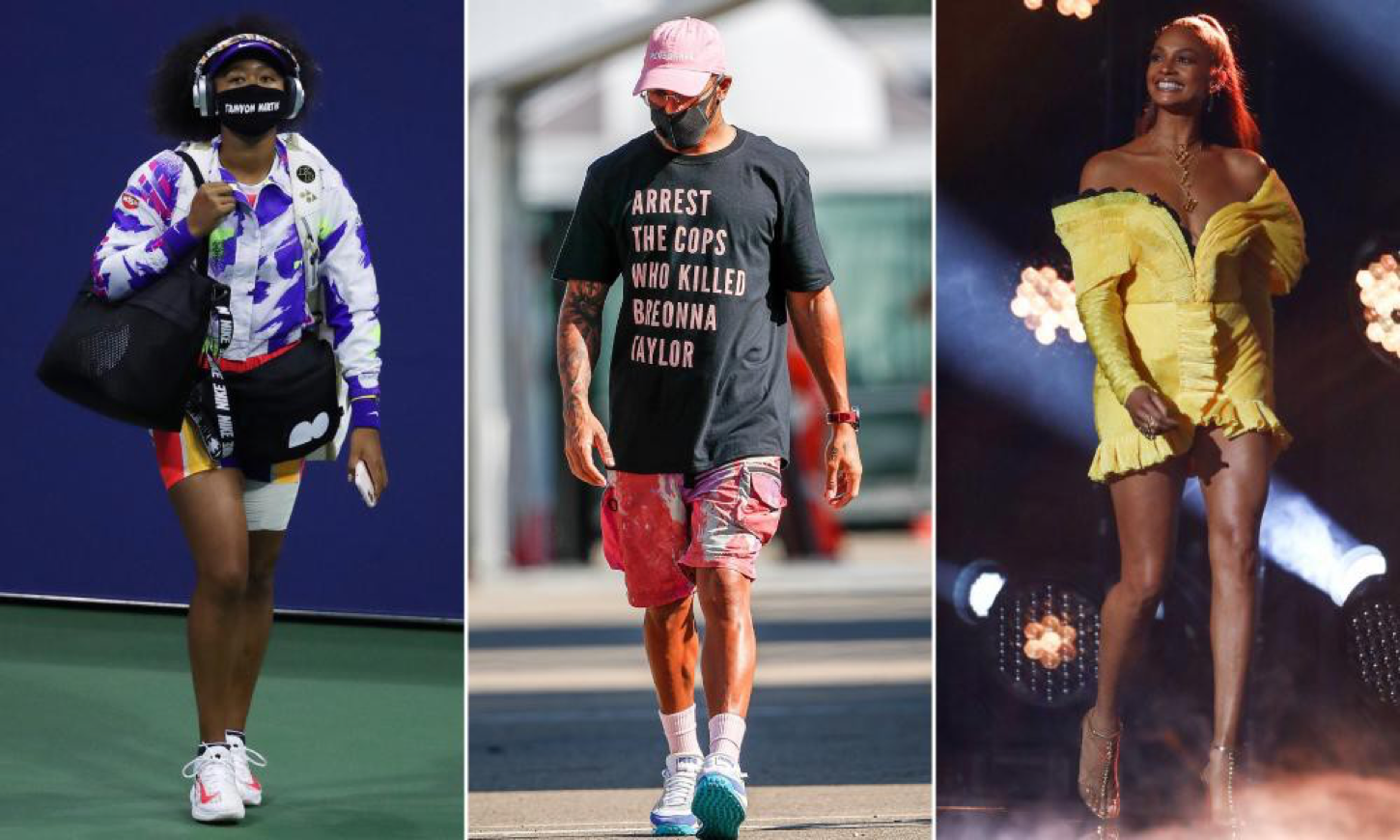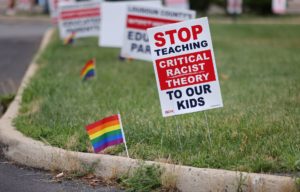The controversy around BLM fashion highlights the systemic racism that the movement is trying to change
Formula One has banned drivers from wearing clothing bearing messages while performing official duties. The decision came after Lewis Hamilton wore a top at the Tuscan Grand Prix on 13 September that said “Arrest the cops who killed Breonna Taylor”.
Since March, celebrities have not shied away from wearing clothing in support of Black Lives Matter (BLM) at high-profile events – but not without a backlash. The Japanese tennis player Naomi Osaka was told to “keep politics out of sport” when she brought seven face masks with the names of different victims of police brutality to the US Open. Almost 2,000 people complained to Ofcom – which has yet to decide whether to investigate – about the BLM necklace worn by Alesha Dixon on Britain’s Got Talent (only a few weeks after the programme received 24,500 complaints – later dismissed by the regulator – about a performance by the dance group Diversity that was inspired by the police killing of George Floyd).
The framing of these moments as radical and political rather than sincere and teachable has raised other questions, such as: are black lives allowed to matter in public spaces – public spaces that are normally the home of white privilege?

This framing reaffirms the status quo of systemic racism. The fashion historian Darnell-Jamal Lisby says BLM clothes are perceived as threatening because they “shake the belief that conditioned the world to believe that white people are superior”. He says they “disrupt a system that privileges those who benefited from the oppression of black people”. As such, the wearing of BLM clothing is suppressed (as in the case of Hamilton) or heavily criticised (as Dixon experienced).
Last month’s Emmys were especially powerful not only because of the number of celebrities wearing BLM clothes, but also because the intimate nature of the ceremony (with nominees filmed at home) made their clothes feel more personal than if they were on a red carpet.
Sterling K Brown of This Is Us wore a dinner jacket over a T-shirt emblazoned with a BLM logo and a black power fist. Yvonne Orji, best known for Insecure, had the fist shaved into her hair. Killing Eve’s Sandra Oh wore a beautiful purple jacket with “Black lives are precious” written on it in Korean.
The T-shirt worn by the Watchmen writer Damon Lindelof was affecting, too. It bore the words “Remember Tulsa ’21”, which referenced the 1921 Tulsa massacre, in which as many as 300 black residents of the city in Oklahoma were killed by white mobs. The Good Place star William Jackson Harper wore a “Good trouble” T-shirt in honour of the late civil rights leader John Lewis. Regina King and Uzo Aduba, who won awards for Watchmen and Mrs America respectively, wore shirts that honoured Breonna Taylor. King paired her T-shirt, which featured Taylor’s face, with a pink Schiaparelli suit.

“As Nina Simone once said: ‘It is the duty of an artist to reflect the times,’” said the stylist duo Wayman Bannerman and Micah McDonald in an email. They worked on King’s outfit: “We chose pink as it is the colour of love and empathy. It is a colour of emotion and nurture.” In light of a grand jury’s decision notto charge officers directly with killing Taylor, the outfits are a sobering reminder of police injustice.
Incidents such as a school district in Ohio banning BLM and other slogan T-shirts for being “controversial” show that the role of the celebrity wearing BLM clothes is as important now as it was six months ago. “Being cognisant of the times is important now more than ever,” said Bannerman and McDonald. “Clothing is an outward expression of inward emotion.”
The F1 has responded saying: “Lewis can wear his BLM t shirt in the paddock and before the race but like any driver it has never been allowed on the podium.”




